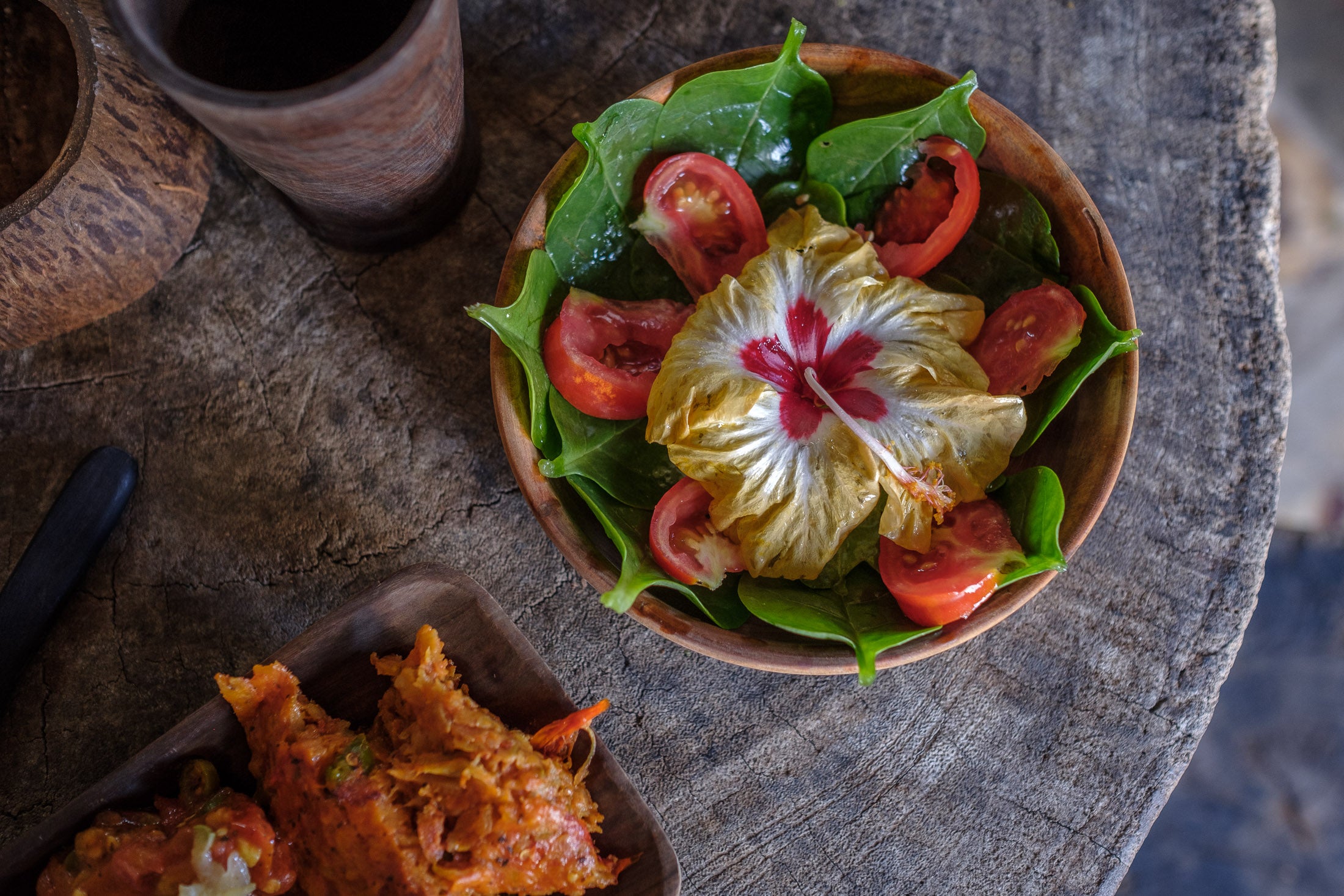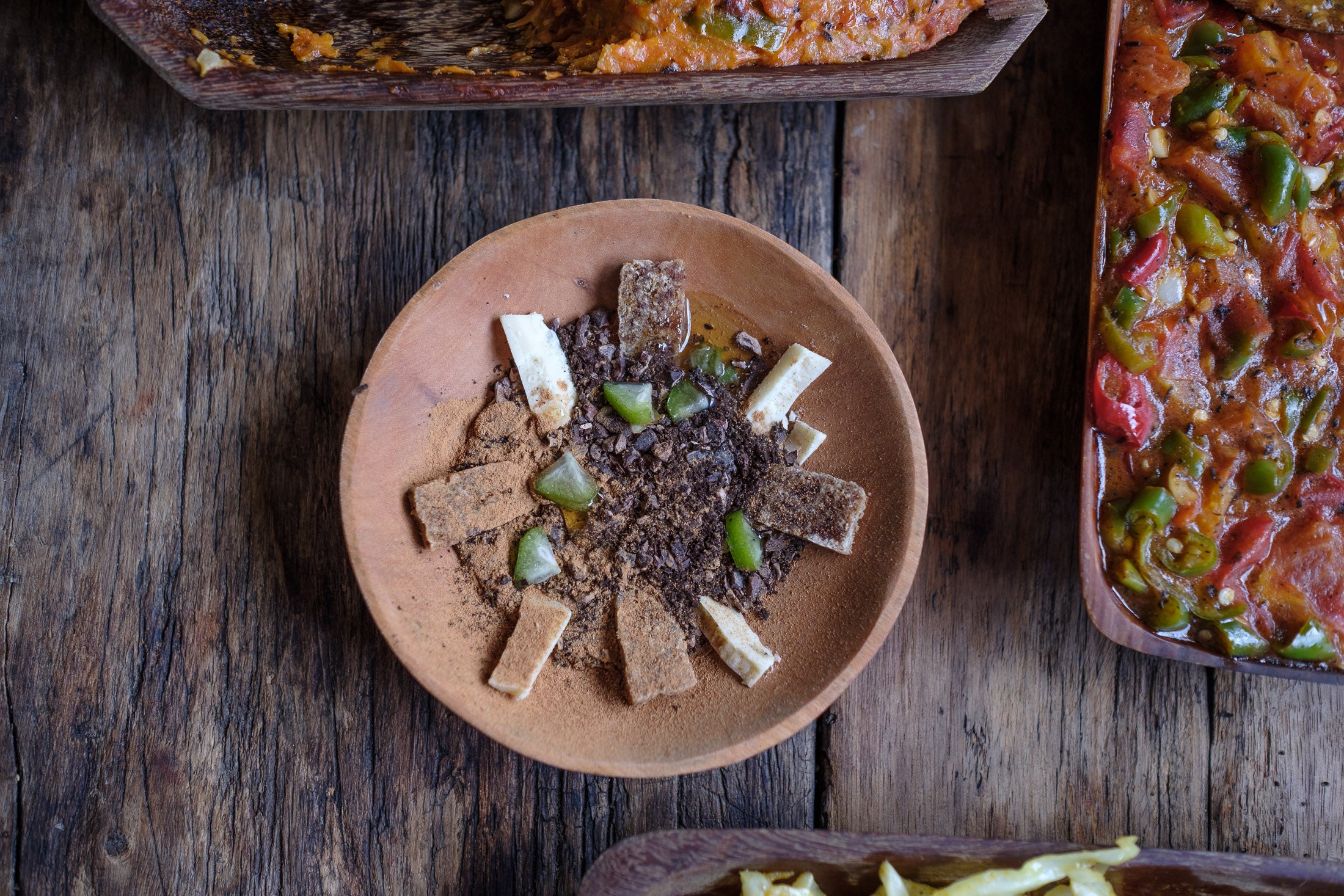Painted snails, cocoa and vegan pioneers: Exploring Baracoa, the real old Cuba
As Cuba opens back up to international tourists from 15 November, Claire Boobbyer champions this lesser-known eastern gem

“I had a girlfriend at 21 who taught me how to eat vegetarian food and have sex,” Aristides Smith confesses as I watch him flutter petals and lettuce under the roof he patched together using homes wrecked by 2016’s Hurricane Matthew.
Smith, now a lean 65, and father of seven, is keen to woo me with his honed flirting, but I’d come to his kitchen table for one thing only: his food. A construction technician-turned-chef, he runs Cuba’s only vegan restaurant in Baracoa.
Here, on the rain-lashed Atlantic coast, the country’s oldest settlement grips, weather exposed, to its easternmost ledge. Daily life, squeezed to the coastline by cool water rivers and coconut palms, rolls under the shadow of a table-top mountain jungled with rare trees. Baracoans are especially proud, being the first town founded by the Spaniards in Cuba. Years of isolation from the rest of Cuba have nurtured glorious fables and fairytales.

The islanders’ relationship with vegetables is complicated. Black beans and salad do not a meal make. Juicy beef steaks, out of reach for the 99 per cent, have pervaded the dreams of Cuba’s 11 million souls since it was struck from most menus decades ago. When the island contracted following a severe economic shock caused by the fall of the Soviet Union and its cash lifelines, its cows, starved of grain, perished in their thousands. Eating beef in Cuba has been tricky ever since.
But tastes are changing on the island and Smith’s Baracoando restaurant is a trailblazer: organic, vegan food, free meals to city kids, and teaching locals how to cook with plants grown on rumpled mountain slopes.
As knives flick and pots steam in his jerry-rigged kitchen, Smith pops the stamen of Cuba’s blue gold onto my tongue.
I wince as my mouth recoils from the intense, slightly citrusy, tongue-curling kick
“Oro azul is 50 times sweeter than sugar cane,” he tells me, talking up the white petalled herb lippia dulcis. “We’ve lost the custom of using this in food, but I’m using it now in my herbal infusions and desserts.”
I wince as my mouth recoils from the intense, slightly citrusy, tongue-curling kick. It’s better muted, meshed into the warming brew of anis and woody romerillo he makes.
My lunch is cassava bread, rice infused with guava fruit, and bacan perdido (lost bacan) – green banana tamales defrocked of their customary banana leaf wrapper. My pud is a joyful mess of coconut, cinnamon, local honey, refreshing pepinillo cucumber and cacao nibs, picked from Baracoa’s heritage cocoa pods. But it’s the salad of spinach, tomato and hibiscus flower with a dressing whisked up from a secret recipe that is the standout.
“River Toa tomatoes, salt and what else?” I ask. But Smith won’t tell.
“The salsa has a little bit of everything…” he says, “and love.”

Talking of love, Smith shows me his back room wall. Snail shells, no larger than a tuppence, and arguably the worlds most colourful, in whorls of yellow, red, green and white are mounted in memoriam. They look like Damian Hirst’s spot paintings of the Tropics.
Baracoa, meaning “place of winds”, is a treacherous home for the polymita snail, unique to eastern Cuba. It wasn’t always so. When the polymita arrived, he was colourless and lonely. But in Baracoa he found his paintbox of colour and traits. He dipped his shell in the yellow of the sun to court happiness; rusty red from the earth for strength and valour; green from plants to capture hope; brilliant white from the crest of waves and thus purity; and black from the night sky where he’d take refuge to protect local souls from pain. The polymita rebuffed the peace and calm of sky blue, as he’d not found love when he first arrived. Smith’s love for the fungi-munching polymita was clear. I could see the endangered mollusc down the coast, he said, where a family cares for the trees they like on a sunny plot of land.
My B&B in town, Villa Paradiso, had hooked me up with a bike and a map for the day. I pedal away from Baracoando and out to Yumuri, 17 miles down the coast, and a thousand geographic and cultural kilometres from the hubbub of capital Havana. Yumuri’s jungle-dressed river canyon, a wedge dug deep through limestone ridge, is gentle with the plop and flow of teal-green water. Its trees are preferred by nesting hummingbirds, whose glittering scarlet and emerald coats wink and shine in the sunlight. On the canyon ledge, I swig a slug of thick, sweet Cuban coffee with the family pampering the polymita’s habitat. In their peaceful garden oasis, the painted snails are modern-day jewels pegged to glossy leaves.

Looking for some R&R of my own, I pedal back towards Baracoa and down to El Manglito beach. The friendly waiter at Tato’s beach shack tempts me with seafood but I already have a date for second pudding, so I settle for a beer and sink into a chair on the biscuity sand and watch the waves roll in while I wait.
Cuba’s cocoa beans, encased in pods of ruddy red and butterscotch yellow, are grown in small plots around Baracoa. The Che Guevara Chocolate Factory, opened in 1963, perfumes the tropical fringes of town. On a trip to Baracoa 10 years ago, I pulled up a seat at the Casa del Chocolate on main street, all love-red cloths and upright chairs. Then, chocolate’s reputation as an aphrodisiac was channelled through the sale of “Vigor” condoms on the menu, at three pence a pack, alongside more humdrum chocolatey drinks. Today, Baracoa’s cocoa is remade through the silver-wrapped tablets of Belgium’s glassy chocolateries. It fetches an eye-watering £126 a kilo.
I meet Daisy Pelegrin Cobas of the Finca de las Mujeres in Jamal village, Baracoa’s chocolate country. Daisy is reverent about her organic beans and irreverent with her male visitors about chocolate’s reputed help in the bedroom. With a twinkle in her eye, we part with our pesos and leave with bags of sugary treats.
I savour my sweets while watching the sun close down the magnificent views of the double scooped coastline
Back on Villa Paradiso’s terrace above the red-tiled rooves below, I savour my sweets while watching the sun close down the magnificent views of the double scooped coastline. Christopher Columbus steered right into Baracoa’s main, tighter harbour in his seafaring search for Japan. His wrong turn changed the fortunes of Cuba. The last week of November 1492 was hurricane season end, when Baracoa’s trees and plants were surely burnished in golden sun.
The Admiral of the Ocean Sea was knocked out: “The water was very cold and pleasant … and very clear,” he wrote in the logbook. “There were a great number of palms … the tallest and most beautiful that I have seen … the small birds and the greens of the fields made me want to stay there forever.”
Exactly so. And I dream of Smith’s dishes, Daisy’s chocolate, lustrous feathers, the beach, and the rainbow-like, lovelorn snails.






Join our commenting forum
Join thought-provoking conversations, follow other Independent readers and see their replies
Comments